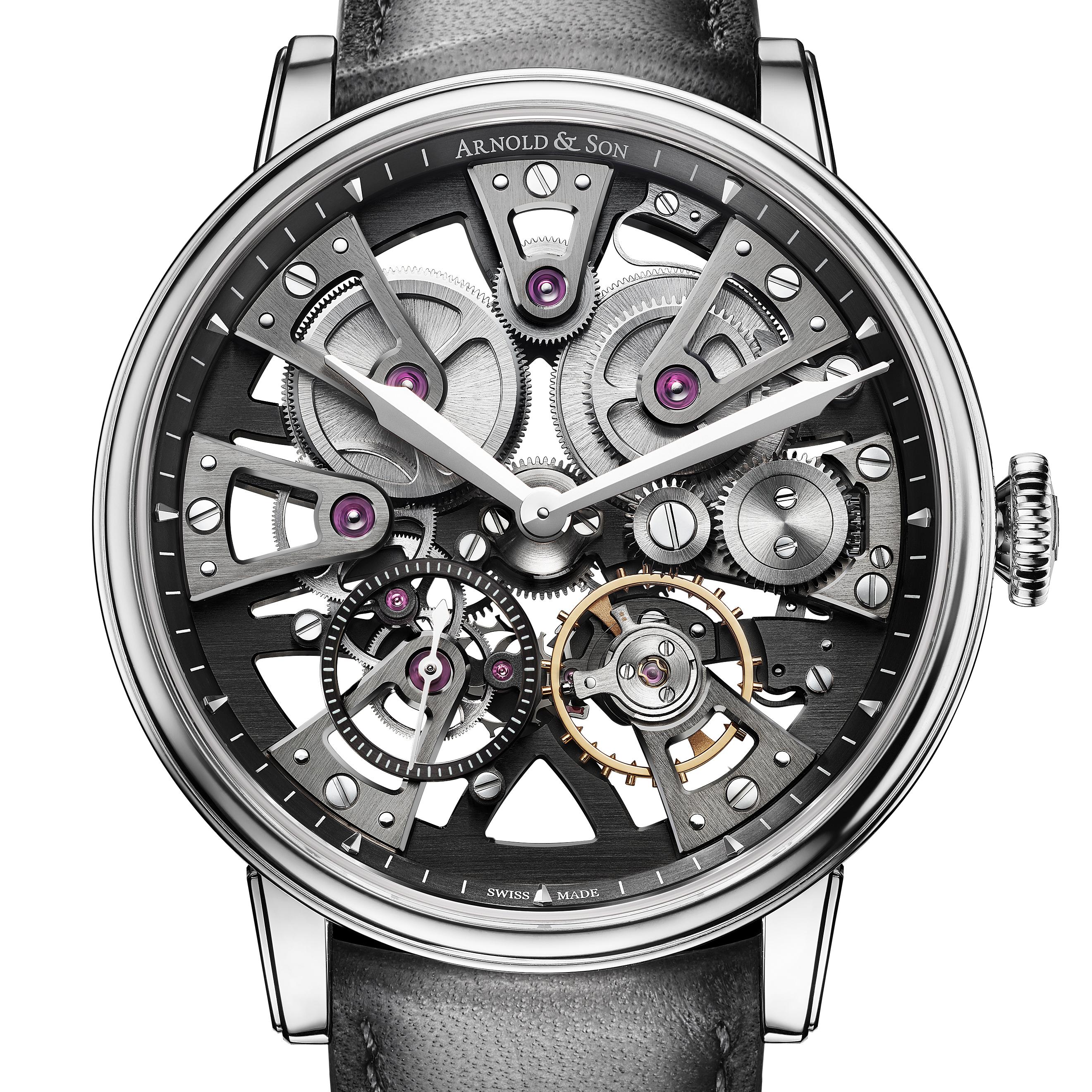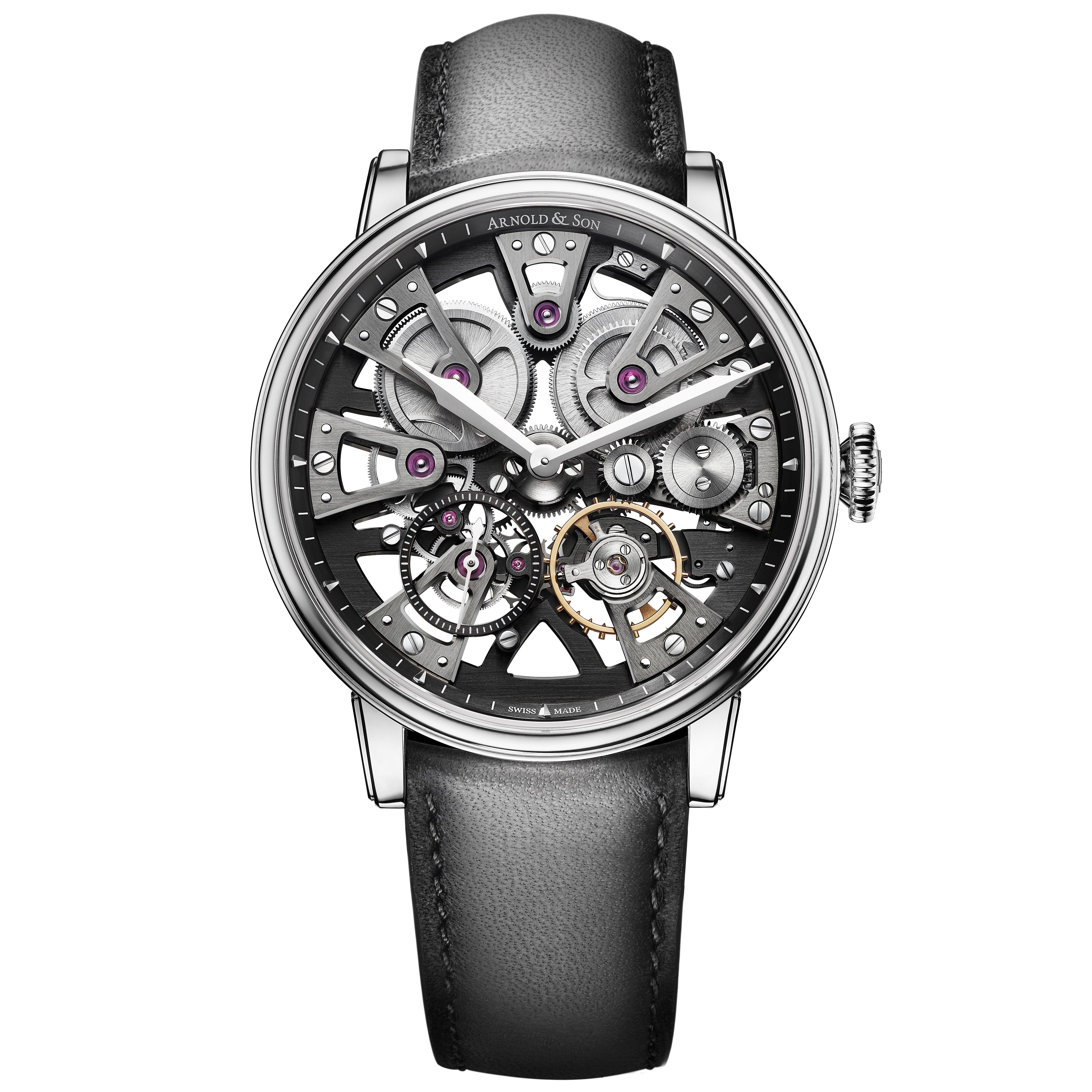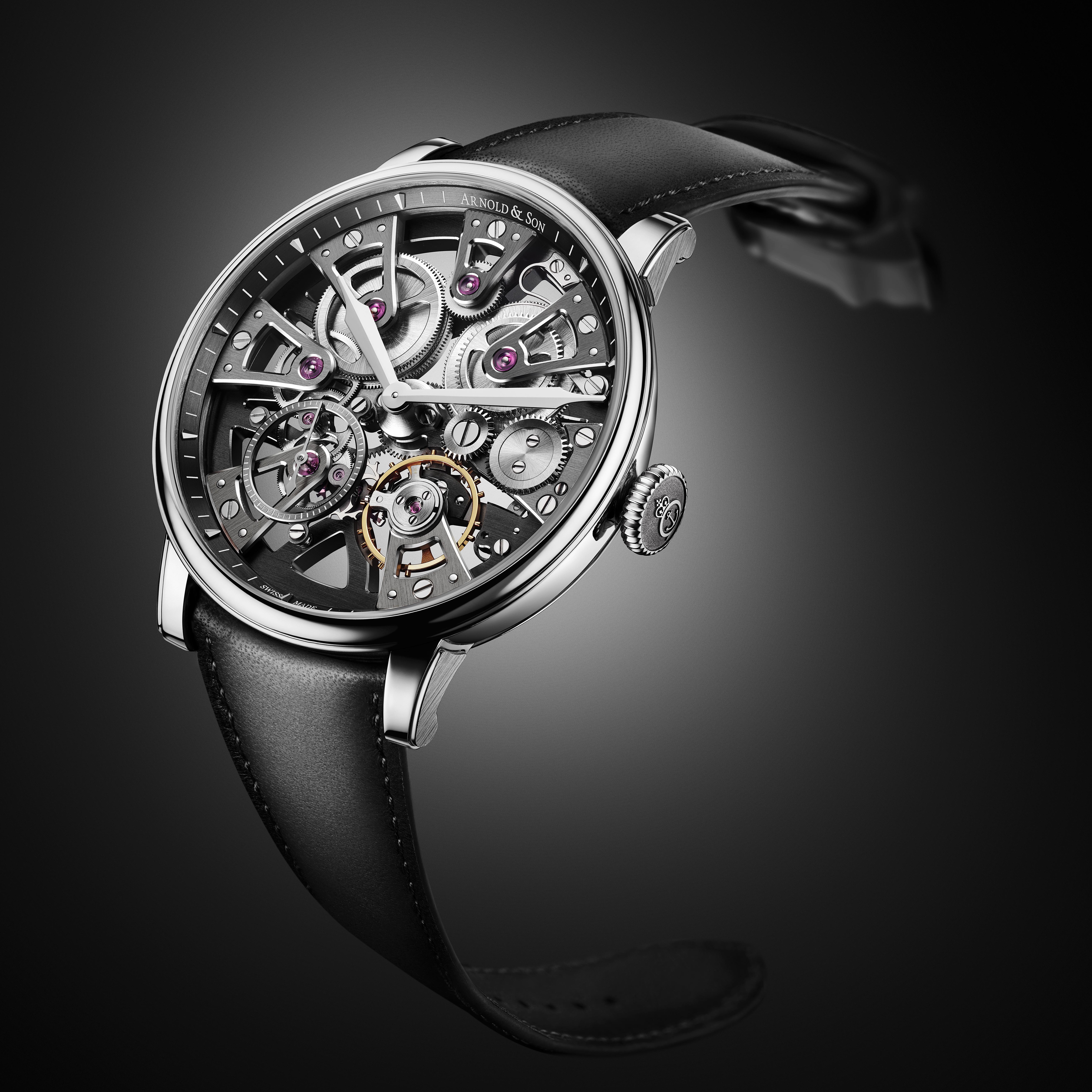
Nebula 38 Steel
Power reserve: 90 h, 21600 vph
Skeleton movement
Nebula 38 Steel
Structural elegance
An auspicious encounter between distinctive aesthetic flair and rare technical skill, the Nebula 38 Steel fully expresses Arnold & Son’s identity as a Swiss watchmaker with English roots. Its openworked movement ties it to the great tradition of British watchmaking, while its design methods and finishes reflect the very best of Swiss quality. Lastly, its composition places it in a rare category: that of harmonious yet striking skeleton watches.
The Nebula 38 is now available in steel. Following the launch of a red-gold version, the house’s iconic watch is now entering new territory where ultra-technical watchmaking is encased in an understated exterior, with a diameter rarely seen in this category and exemplary slimness.
Identity and style
Semantically, the name ‘Nebula’ was chosen because the sculptural movement driving this timepiece evokes an inverted star that has exploded in an ideal orderly fashion, i.e. with all the bridges converging from the outside of the dial towards the centre, like perfectly symmetrical rays. In terms of complications, the Nebula 38 belongs to the family of three-handed watches indicating the hours, minutes and off-centred small seconds. Lastly, in terms of complexity, this timepiece constitutes one of the most graphically striking, high-impact and original skeleton watches.
The Nebula 38 pushes mechanistic aesthetics to such an extreme that its movement has become its very identity. The dial is reduced to a black lacquered flange, while the calibre mesmerises the eye with its arrangement, layers and curves, its juxtaposed materials and play on solids and hollows. Here, the A&S5101 calibre is the dominant orator, speaking in the style of John Arnold. By continually drawing on the intellectual and aesthetic heritage of the genius watchmaker from whom it takes its name, Arnold & Son conveys a message based on technical skill, coupled with balance, measurements and proportions.
Openworked structure
The structure of the A&S5101 calibre is based on carefully considered symmetry. Seven bridges span the four axes that cross the Nebula 38, creating a sense of visual balance. Meanwhile, the proportions are communicated by the dimensions of the steel case: a diameter of 38 mm for a thickness of 8.91 mm, with a domed sapphire crystal on the dial side and a flat sapphire crystal on the case back.
On the dial side, the Nebula 38 enumerates its components explicitly, almost didactically: a double barrel bridge, crown bridge, balance bridge, geartrain bridges...everything is clear, visible and structured. While all these bridges dialogue with each other on opposing axes within the movement, the functional elements also adhere to this mirrored design. The small-seconds function at 7 o’clock, for example, is twinned with the balance. While technically different, these two blocks adopt similar shapes to perfect the movement’s sense of equilibrium. The harmony is plain to see, as all the bridges, plates and solid components are openworked.
Order and beauty
This construction was far from easy to devise, however. Arranging the structures of a skeleton movement in a ring facing inwards is an utterly unique approach. Furthermore, to maintain the sense of symmetry, Arnold & Son moved the winding mechanism linked to the crown stem to the case back, giving it an unusual position that is entirely justified for the overall aesthetic coherence it procures. In spite of this, the Nebula 38 was designed with practicality in mind, as it presents a 90-hour power reserve that is rare for skeleton models.
The characteristic Arnold & Son style shines through in the masterful play on contrasting surfaces adorning the Nebula 38. The house has used a variety of colours, finishes and levels to ward off any risk of illegibility. The bridges are thus all the same height on the dial side, while on the case-back side, a large sapphire crystal reveals a mainplate that has been openworked to the extreme. Its design features several criss-crossing arcs, with intersecting circles and ellipses that are reminiscent of a Gothic cathedral’s vault.



